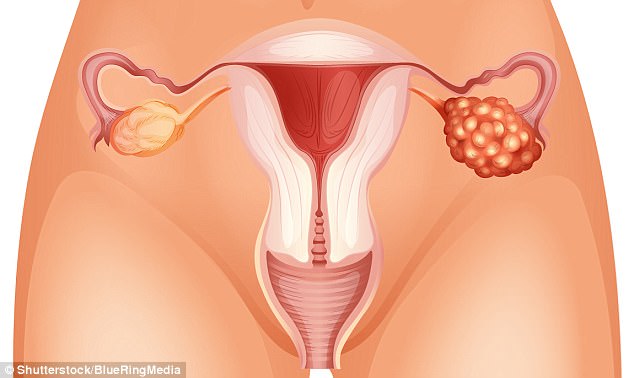 The words “folate” and “folic acid” are sometimes used interchangeably and this can be a costly mistake when it comes to your health. These two substances are technically different forms of “vitamin B9.” However, one is a substance your body cannot live without. The other may stimulate cancer tumors to grow.
The words “folate” and “folic acid” are sometimes used interchangeably and this can be a costly mistake when it comes to your health. These two substances are technically different forms of “vitamin B9.” However, one is a substance your body cannot live without. The other may stimulate cancer tumors to grow.
Folate Deficiency
Folic acid is a synthetic form of B9 that is obtained mostly through supplementation. It can be difficult to assimilate, but more on that in a minute. Folate, on the other hand, is found in fresh, whole foods and is easily absorbed and utilized in the body, according to many experts. Continue reading


 Two recent studies have confirmed previous claims that the deadly disease actually starts in the fallopian tubes.
Two recent studies have confirmed previous claims that the deadly disease actually starts in the fallopian tubes.
 Books can inspire and support us in so many ways. We can get lost in beautiful fiction novels, or we can benefit from practical tips from a “how-to” book. As my team and I have supported women in over 39 countries, we always recommend a list of books that will encourage them through their journey. In fact, we ask them to commit to reading and doing the work specified in these books, so they can shift beliefs and patterns that may be holding them back, consciously or subconsciously.
Books can inspire and support us in so many ways. We can get lost in beautiful fiction novels, or we can benefit from practical tips from a “how-to” book. As my team and I have supported women in over 39 countries, we always recommend a list of books that will encourage them through their journey. In fact, we ask them to commit to reading and doing the work specified in these books, so they can shift beliefs and patterns that may be holding them back, consciously or subconsciously.  Your heart dropped when you heard the diagnosis. No one leaves the doctor’s office feeling good after being diagnosed with cancer. Still, you are a fighter. After explaining things to your loved ones, you worked together with medical professionals to create a plan to beat it. Whether it’s radiation, chemo, or something else, you are going to defeat cancer.
Your heart dropped when you heard the diagnosis. No one leaves the doctor’s office feeling good after being diagnosed with cancer. Still, you are a fighter. After explaining things to your loved ones, you worked together with medical professionals to create a plan to beat it. Whether it’s radiation, chemo, or something else, you are going to defeat cancer.  Grab your tissues, because famous Staten Island, N.Y., PS22 chorus has done it again.
Grab your tissues, because famous Staten Island, N.Y., PS22 chorus has done it again.
 Chrysanthemin, which is the 3-glucoside of cyanidin, is a member of the anthocyanin class of natural products. According to an MTT assay (a colorimetric assay for assessing cell metabolic activity), chrysanthemin tends to inhibit the growth of prostate cancer cells, inducing dose-dependent and time-dependent cytotoxic effects in them.
Chrysanthemin, which is the 3-glucoside of cyanidin, is a member of the anthocyanin class of natural products. According to an MTT assay (a colorimetric assay for assessing cell metabolic activity), chrysanthemin tends to inhibit the growth of prostate cancer cells, inducing dose-dependent and time-dependent cytotoxic effects in them.  My husband is a sixteen-year cancer survivor. When he was diagnosed in 2001 there were no books, no seminars and very few options for Acinic cell cancer. The treatment proposed was very disfiguring with probable facial nerve damage; and the only two people the local surgeon had operated on were dead. Choosing a well known teaching hospital instead, we prepared for surgery number 2—to correct the misplaced surgical drain shooting saliva out of the back of his ear; and to remove the other half of the tumor we were told was left behind from surgery number 1.
My husband is a sixteen-year cancer survivor. When he was diagnosed in 2001 there were no books, no seminars and very few options for Acinic cell cancer. The treatment proposed was very disfiguring with probable facial nerve damage; and the only two people the local surgeon had operated on were dead. Choosing a well known teaching hospital instead, we prepared for surgery number 2—to correct the misplaced surgical drain shooting saliva out of the back of his ear; and to remove the other half of the tumor we were told was left behind from surgery number 1.  A study found that the stem and root extracts of native plants from Mexico could be possibly used as a source of anticancer treatment. A team of researchers from the University in Mexico and Technological University of the Mixteca in Mexico investigated the potential anticancer effects of eight folk medicinal plants from Mexico.
A study found that the stem and root extracts of native plants from Mexico could be possibly used as a source of anticancer treatment. A team of researchers from the University in Mexico and Technological University of the Mixteca in Mexico investigated the potential anticancer effects of eight folk medicinal plants from Mexico. 
 A woman who battled blood cancer for years without success finally halted the disease with turmeric, it has been reported.
A woman who battled blood cancer for years without success finally halted the disease with turmeric, it has been reported.